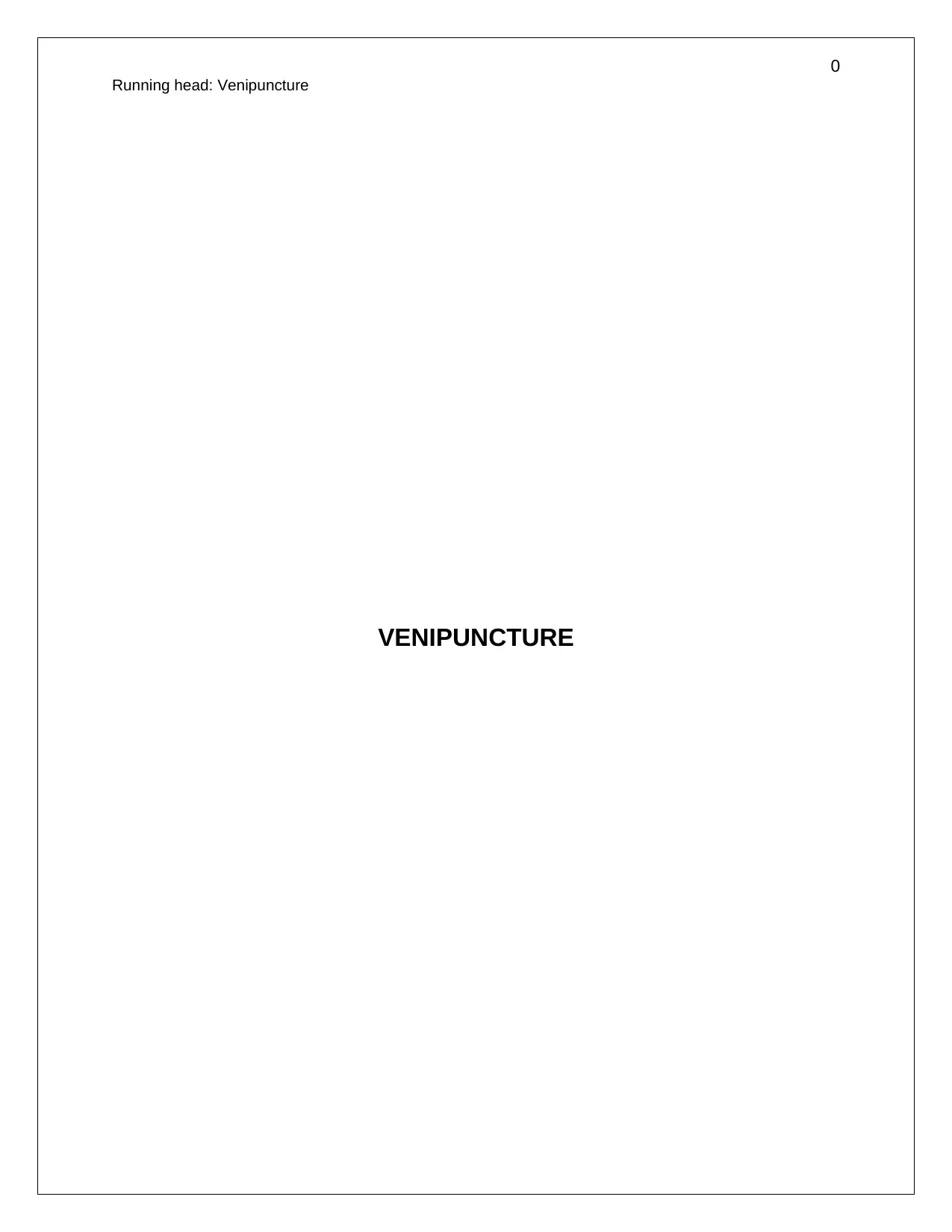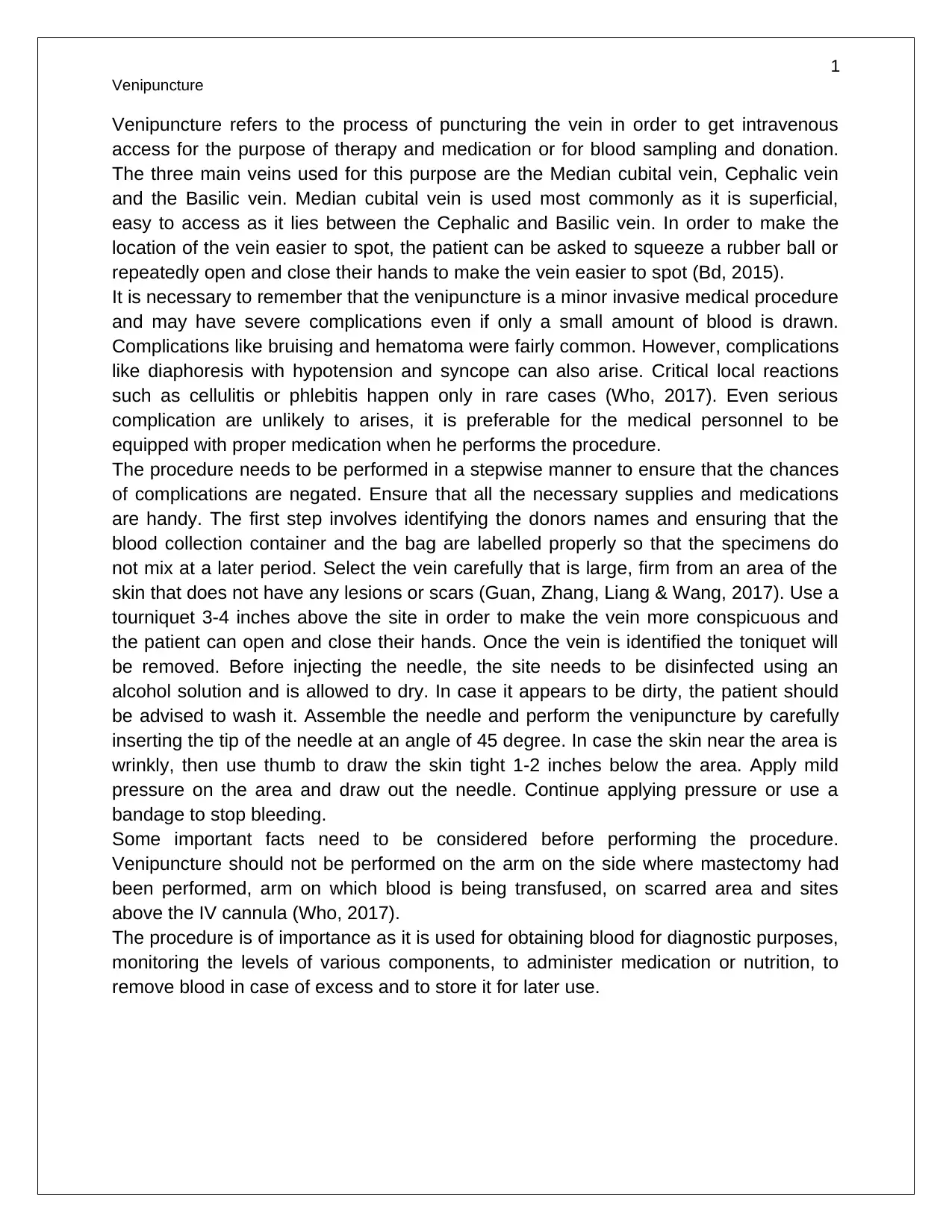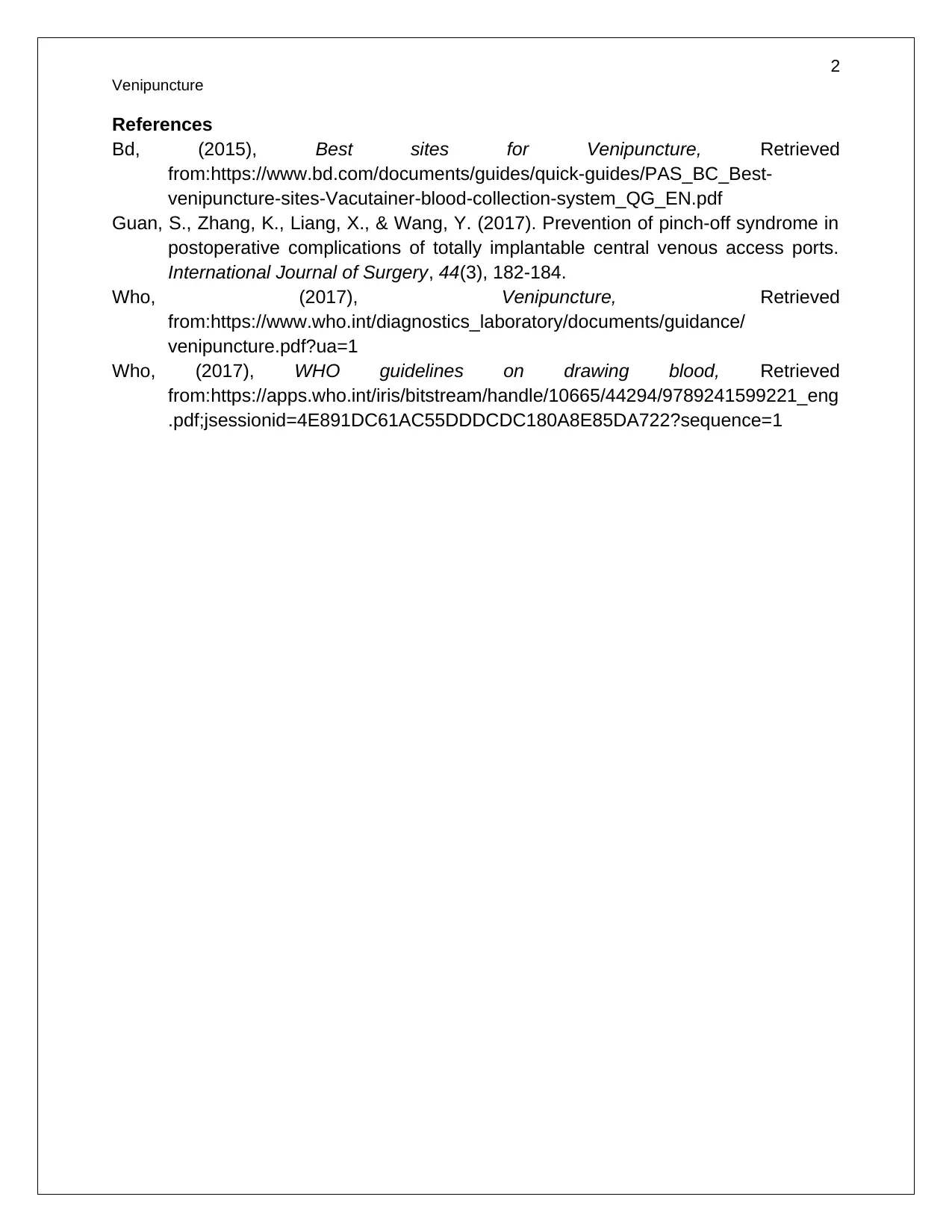Venipuncture Procedure: Risks, Steps and Considerations
VerifiedAdded on 2023/01/10
|3
|666
|76
Report
AI Summary
This report provides a comprehensive overview of venipuncture, a crucial medical procedure for intravenous access, blood sampling, and medication administration. It details the three main veins used: the Median cubital, Cephalic, and Basilic veins, with emphasis on the Median cubital vein due to its accessibility. The report outlines the stepwise procedure, including patient preparation, vein selection, tourniquet application, site disinfection, and needle insertion techniques. It also highlights essential precautions and contraindications, such as avoiding venipuncture in areas with mastectomy, blood transfusions, scars, or above IV cannulas. Furthermore, the report discusses potential complications like bruising, hematoma, and rare but serious reactions like cellulitis or phlebitis, emphasizing the importance of proper medication and a stepwise approach. The report references key sources such as the WHO and BD guidelines to support its information, underscoring its significance in healthcare practice and diagnostic procedures.
1 out of 3






![[object Object]](/_next/static/media/star-bottom.7253800d.svg)